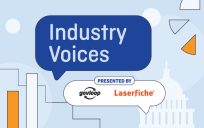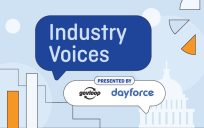“The public always wants us to innovate, but they also expect predictability and reliability.”
A long-time public servant uttered these words to me early in my own government career. They, with slight exasperation, suggested that balancing innovation and predictability would be one of the difficulties I’d encounter — whether it were a rabbit or a hat to pull from I couldn’t be entirely sure — time and again while trying to deliver public value.

However, I quickly came to learn that innovation and reliable services shouldn’t conflict with each other. In fact, one of the most consistent themes of my 15 years in government is that my colleagues and I had to continue to deliver quality services with fewer and fewer resources as budgets stayed flat and the costs of labor and goods continued to rise. The only path forward was to innovate.
These innovations came at times in large ways but more often small, and almost always unseen by the public. And that’s perhaps most unfortunate, as it marked an opportunity missed in the enduring struggle to elevate the relevance and quality of government in the eyes of the public — but that’s another blog post entirely.
So how do we provide the same level of service with relatively less? Below are a handful of tips to do just that:
- Clarify your priorities: The key to successfully building a culture of innovation without sacrificing the reliability and predictability the public deserves is getting clear on your agency’s priorities. Any good strategy session or planning process should focus on the future you want, not simply solving the problems of the past.
- Avoid spending resources on work that is not aligned with those priorities: Once you have established your priorities, you’ll often be surprised at what you’re doing that doesn’t serve them. In some cases, you may not be able to shed activities that are out of alignment. There are a great many functions governments must perform by law or convention which we might otherwise not prioritize, and those you’ll have to keep doing. But where you can stop spending resources to solve yesterday’s problems, you should.
- Focus on outcomes, not activities: A key facet of innovating to drive public value is to focus first on outcomes — what is it we’re trying to accomplish, not the discrete tasks that we undertake to effect those outcomes. Think about using a compass vs. a treasure map. When we focus on the end goal, we’re able to start finding paths to get there that may or may not have been obvious before.
- Consider a wide range of approaches to delivering the service: A great way to make 1 + 1 equal 3 is to leverage outside help. Partnership, whether with other public agencies or non-governmental organizations, is a great way to maximize the limited resources at your own disposal — and theirs. What’s important is, again, to maintain focus on your priorities so that your limited resources don’t end up being used towards objectives that don’t fit your goals.
- Engage private sector partners as well: Don’t be afraid to look to the private sector to see if there are ways to purchase services that could be complementary to the work you’re doing within your own agency. Doing your due diligence here to find the right partner to augment your team, or to provide a service more efficiently and effectively than you could deliver on your own will yield strong returns on your monetary investment.
The idea that innovation and reliability are at odds with each other is a common one in government, but it doesn’t have to be that way. In fact, public servants have been innovating for decades, finding ways to deliver quality services even with limited resources. By focusing on outcomes, shedding activities that don’t fit priorities, and leveraging outside help, governments can balance innovation and predictability and do more with less. And it doesn’t even require seeking reimbursement for a magic wand.
I’d love to hear your thoughts on your experience driving public value through innovation at your local government or state agency — especially whether you’ve had success or struggle with the tips above. Feel free to comment below or reach out to me directly at [email protected].
Micah Intermill is Founder + Principal at GovStrategist LLC, a consulting firm providing strategic management, public finance and executive coaching services to local governments and state agencies. With nearly two decades of experience in and around the public sector, Micah was previously Director of Solutions Engineering at OpenGov, Budget Director for the City of Minneapolis, and Chief Financial Officer for the State of Minnesota’s Department of Administration. Micah holds a Master’s in Public Policy from the University of Minnesota’s Humphrey School of Public Affairs, and a Bachelor’s Degree in Journalism from the University of Nebraska.





Leave a Reply
You must be logged in to post a comment.